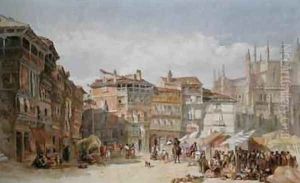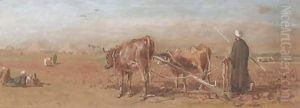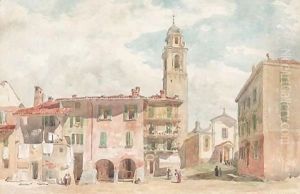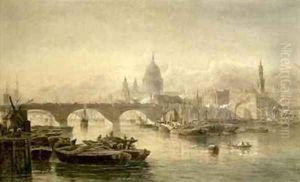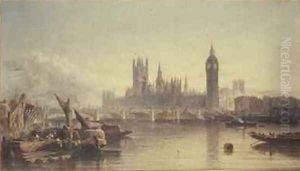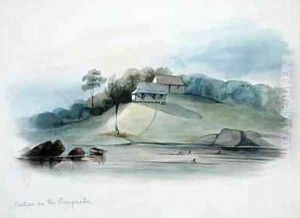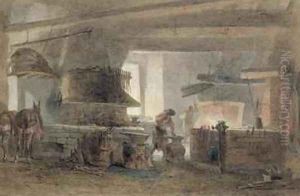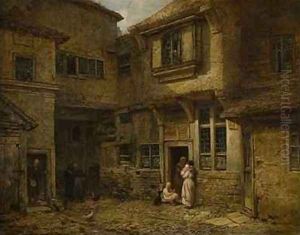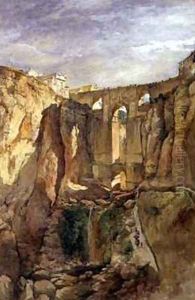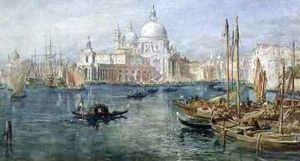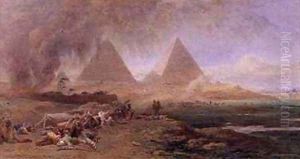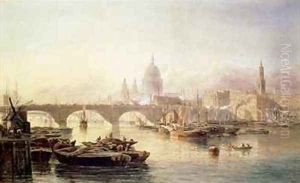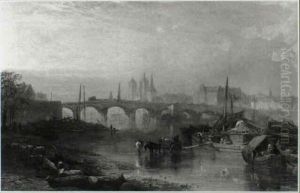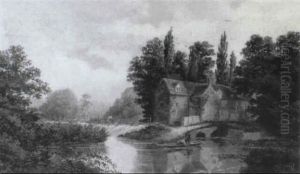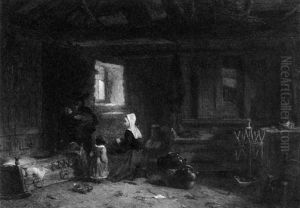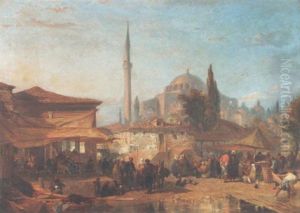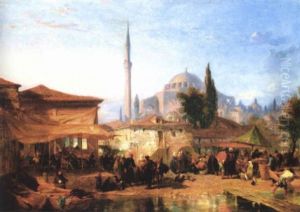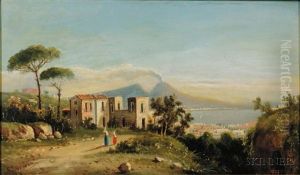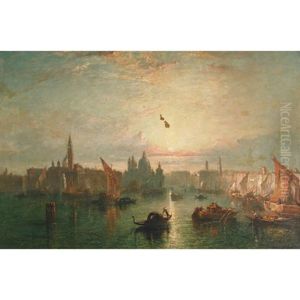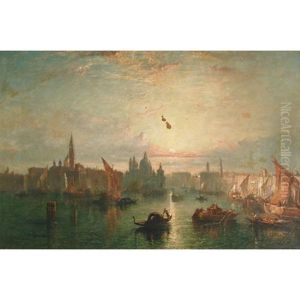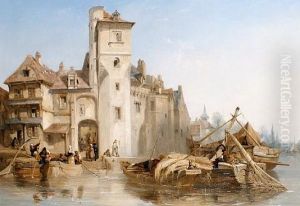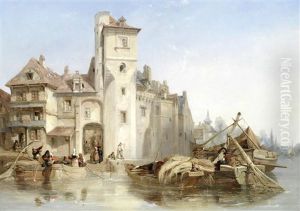Edward Angelo Goodall Paintings
Edward Angelo Goodall was an English painter known for his watercolours and contributions to Victorian landscape painting. Born on June 8, 1819, in London, he was part of a distinguished family of artists, with his father, Edward Goodall, being a skilled engraver and his brothers, Frederick Goodall and Walter Goodall, also achieving recognition in the art world. This environment deeply influenced Edward A. Goodall’s development as an artist, providing him with both inspiration and a rigorous understanding of artistic techniques from a young age.
Goodall's career was marked by his fascination with exotic and historical landscapes. He joined the Royal Watercolour Society in 1852, an affiliation that would last throughout his life, allowing him to exhibit his work regularly. His travels to the Middle East, particularly Egypt, in the 1850s deeply impacted his artistic direction. The sketches and paintings produced from these journeys captured the imagination of the Victorian public, offering them glimpses into faraway lands. His work is characterized by meticulous detail and vibrant colours, capturing the essence of the landscapes and cultures he visited.
Apart from his travels in the Middle East, Goodall also explored the landscapes of South America, especially Venezuela, which further enriched his palette and subject matter. These experiences allowed him to develop a distinctive style that combined the accuracy of an explorer with the sensibility of a painter. Throughout his career, Goodall was committed to the watercolour medium, contributing significantly to its recognition and appreciation during the Victorian era.
Edward Angelo Goodall's contributions to Victorian art were not limited to his own works; he was also instrumental in the Royal Watercolour Society's efforts to elevate the status of watercolour painting. His dedication to the art form and his role as a mentor to younger artists helped to ensure the continued popularity and development of watercolour painting in England.
Goodall lived through a period of significant change in the art world, witnessing the rise of new art movements and the evolution of public tastes. Despite these changes, he remained true to his vision, focusing on historical and exotic landscapes that continued to captivate his audience. He passed away on April 17, 1908, leaving behind a legacy of work that continues to be admired for its beauty, technical skill, and historical value. His paintings are held in collections around the world, serving as a testament to his lifelong dedication to exploring and capturing the beauty of distant lands and cultures.
